Ownboard’s hybrid all-terrain board is highly flexible in both deck and wheel options. With rugged build quality, a surplus of power and range, and at just half the price of the Evolve options it takes design cues from, it’s obvious why Ownboard now has a hard time keeping these on the shelf.
In the past year, many in the eskate community have found a new compromise, for some a new ideal: the all-terrain board. As the limitations of urethane street wheels are painfully clear to anyone who has hit some pebble at the wrong time and been ejected from their board like a rag-doll, many of my riding buddies have moved towards all-terrain eskates. And with nearly seven-thousand miles on electric skateboards, you can imagine I’ve taken a few gnarly slams, so I bit the bullet on one myself.
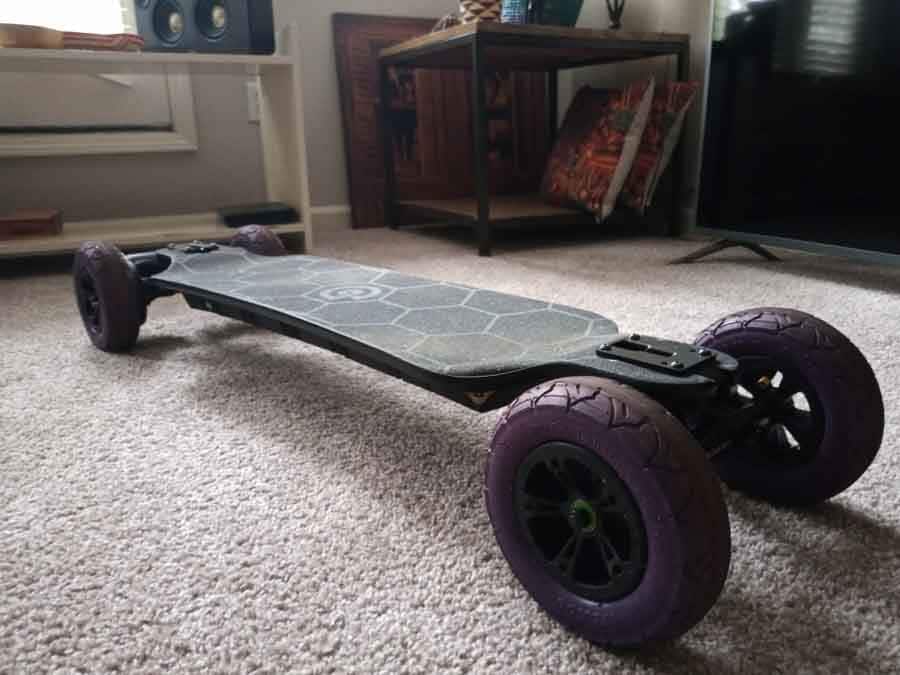
Ownboard’s recent Bamboo AT really exemplifies the industry’s frenetic push for value, power, and now safety. Having logged over 1500 miles on my Bamboo already – without a single issue or malfunction – I can easily say this is the most durable of my several boards. One out of twenty-four enclosure screws did strip its threading, but considering I use my board like a trampoline, that’s to be expected. I’ve never had to tighten my motor mounts, reattach loose wires to the ESC, swap out a cracked deck, hot-glue a busted enclosure, or any of the other repairs that used to be frequent and necessary. I credit the segmented enclosure for much of this, as it’s designed to flex with the deck and puts much less strain on the electronics. Inside the enclosure, Ownboard has even silicone-sealed the battery pack for extra water resistance. Needless to say, that level of quality for under a thousand dollars U.S. is surprising.
Durability – a monster
Its durability is actually a bit shocking when I think of all the daily abuse I put it through. Between riding off-road through mud and gravel pits, carving like a maniac, accelerating and braking full-stop, and the constant jumping, the way I treat my Bamboo is almost sadistic. Maybe my unconscious wishes it would break, since all my other boards would have under such conditions.
Size and Dimensions – not the smallest
Let’s just put it out there: this thing is big, both in dimensions and weight. At twenty-four pounds and without a handle, the Bamboo is cumbersome to be sure. And yet, once I set out for a ride, much of my apprehension turned to pleasure in the stability provided by that width and weight. Now, carrying the Bamboo under your arm for a city block or more becomes an agonizing exercise, but the truth remains that with such a large battery, if you have to walk this thing, it’s your own fault.

Deck and its Flex
Speaking of its namesake deck material, the flex of the Bamboo is high, but not so extreme as the Wowgo 3 or Exway Flex. This is a good thing: when riding double-kingpin trucks at high speeds, any more flex than this would risk speed wobbles or bouncing you off outright. The level of flex still affords an extremely comfy ride that lets me ride over twenty miles a day without so much as a hint of the sore feet that used to define long rides on street boards.
The double-drop deck features a modest concave that combines with the drop-down angle to offer a kind of anchor for your front foot that really locks the rider in. I really notice the extra insurance this provides whenever I slam on the brakes and my foot can actually push back against the drop pocket. The Bamboo’s low-slung deck really shines with large wheels that would otherwise set you many wobbly inches off the ground, thus keeping a low center-of-gravity not often seen in all-terrain boards.

Trucks – are they good?
Double-kingpin trucks (DKPs) are kind of polarizing. On the one hand, they offer a tighter turning radius than you’d think possible given the Bamboo’s large dimensions (think 180s in the width of a single traffic lane). Very small inputs from your feet translate to powerful motion in the trucks. This is also why they can feel squirrelly at high speed if you’re not used to them. As an aside, when starting with DKPs I recommend carving more with your leg muscles than your feet, which makes them react more like a typical reverse-kingpin truck. At least, that’s how I learned to ‘stop worrying and love the bomb’. In many instances it’s that same ultra-sensitive nature that allows you to stay on the board when your mates can’t cut the turn and have to bail.
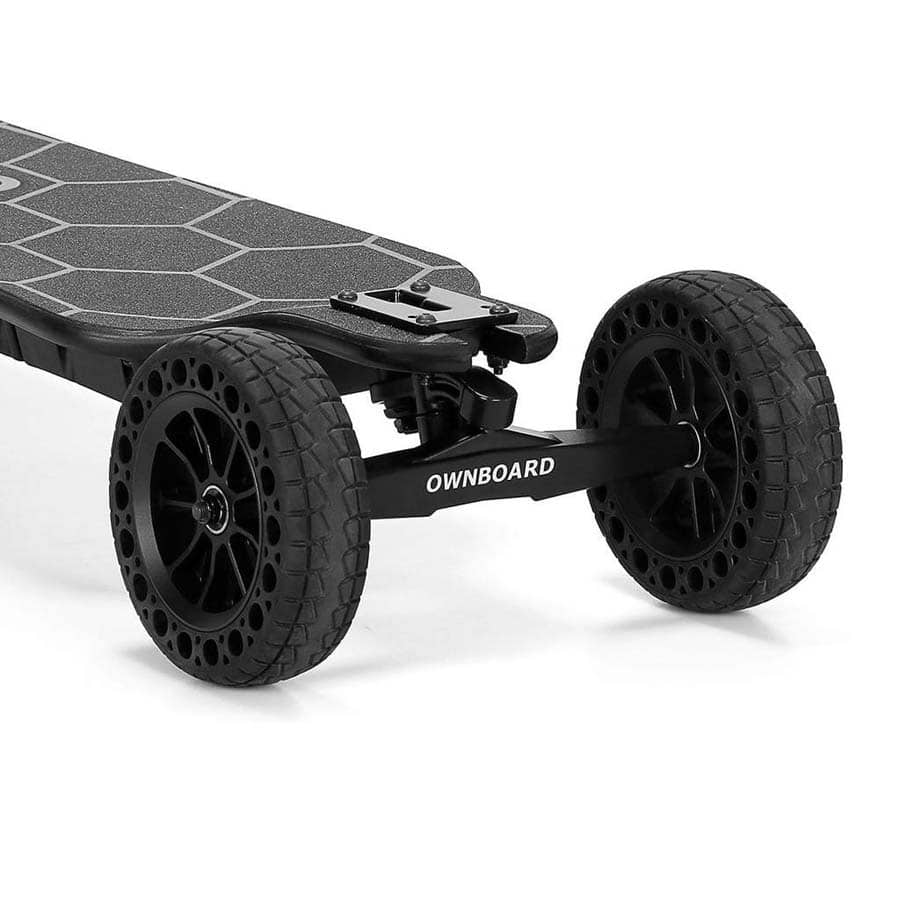
Handling and Control – Premium ESC?
In terms of performance, the Ownboard Bamboo is at once controllable and beastly. The Hobbywing ESC offers the same reliable precision of throttle and brake curves that we all love, with very little dead-zone on the remote. Newer riders can get comfortable by nudging the throttle, as top speed is governed by throttle position, so you can stay at any speed that works for you, no matter the power mode. But even for expert riders, if you pin the throttle, the torque will… test you. With 3000 watts of continuous power, the Bamboo’s beefy 6368 motors are capable of some ridiculous feats. Though they are the most whisper-quiet belt drives I’ve had the pleasure of riding, they can launch you to well over twenty miles-per-hour in just three or four seconds. The Bamboo can effortlessly fly up extreme hills that have stopped most of my other boards dead in their tracks. The other day in the park, I was able to climb a more than 30% gradient covered in tall grass as picnic-goers looked on mystified. On a recent group ride, I towed someone up a ten-floor parking garage spiral at high speed while barely hitting the throttle. And that was with seven-inch pneumatic tires on.
‘Beginner’ mode one already kicks like a mule, albeit just to it’s 13 mph top speed. This means that even veteran eskaters will find themselves quite satisfied with mode one for cruising. Intermediate and expert modes unlock further top speeds as well as some awe-inspiring levels of torque.
The Bamboo’s brakes are reasonably strong. Though they can feel a touch soft at minimum speed (ie. under seven miles-per-hour), at normal speeds they are much stronger, especially after Ownboard’s recent tweaks to the ESC. Even with my oversized tires – larger diameters usually reduce braking torque – the brakes can easily throw less experienced riders.
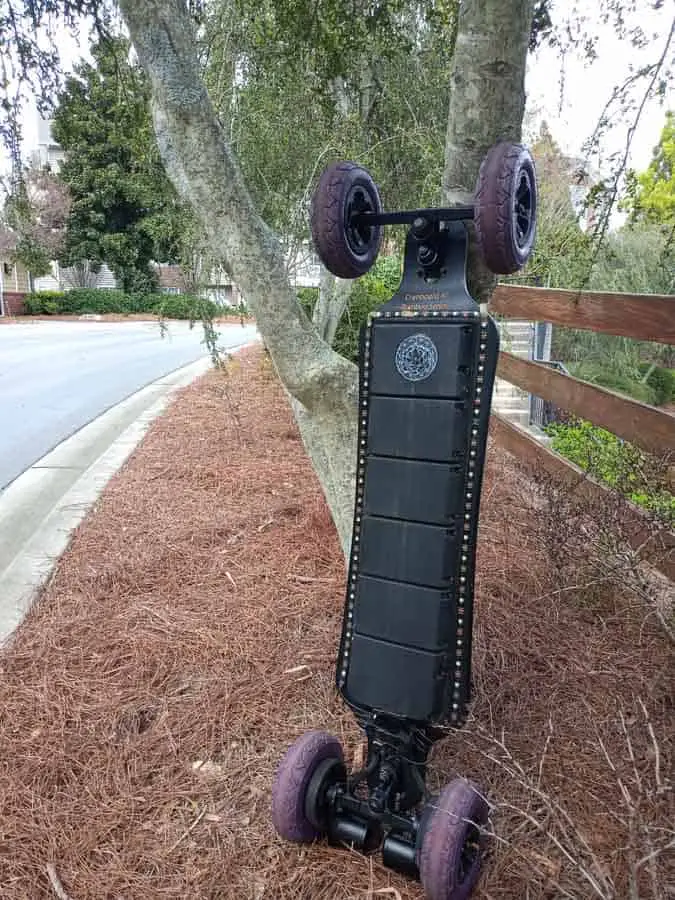
What’s up with the AT/ GT? Wheel Set-Ups
One of the Ownboard Bamboo’s main features is its versatility with different wheel setups. The board comes stock with 120mm Cloudwheels (the ‘GT’ setup) or 6” airless all-terrain wheels, and you can buy the combo for $100 more. The Cloudwheels perform well as a hybrid wheel, oversized and with a tread pattern that allows them to cross short grass and packed dirt much better than street wheels. Though they are much stiffer than their claimed 78A durometer, they do indeed make for a comfy ride. However, if you’re a hard carver, prepare for the center strip to wear down and lose a significant amount of traction within a few hundred miles. This makes it hard to recommend Cloudwheels as a viable long-term option. The 6” AT wheels are good, and have the benefit of being immune to flat tires, with a honeycomb structure of holes punched out of the wheel for high impact absorption. While I enjoy riding them, the honeycomb actually makes them a bit too squishy, which does further aid their grip, but has negative implications for range and torque.
But my Bamboo’s real endgame came when a friend recommended Evolve’s 7” pneumatic tire kit. With the included pulleys, you can literally drag-and-drop the tires onto the Ownboard Bamboo without any fuss, as the two brands share nearly identical trucks. The Evolve kit comes with 58T pulleys, which for the layman means you can keep the extreme torque and longer range of a Cloudwheels setup, along with all the benefits of air-filled tires. If you like hitting mach three, they also raise the top speed to more than thirty miles an hour, not that I’d recommend it on DKPs without a lot of practice. At $249, the Evolve 7” kit is pricey, but sets the Ownboard’s overall performance profile closer to the likes of a Lacroix or higher-end DIY.

Range – How far does it go?
Range thus depends heavily upon which wheel setup you choose, but with a huge 504-watt hour pack it won’t disappoint. Riding conservatively with around 175 pounds of rider weight, I averaged over twenty-one miles of range on both Cloudwheels and pneumatics, with the Evolve tires even edging out the Cloudwheels. Meanwhile, the 6” airless ATs average six or seven less, with eighteen miles a hopeful upper limit. In short, twenty-six miles was my record (with the pneumatics), which for a budget AT board is truly impressive. Voltage sag remains minimal even under ten percent, surprising for the moderate amperage provided by Sanyo’s GA cells.
Other quality-of-life features include a dedicated USB port – which, in my case, powers some slick color-fading light strips – and the new remote with a bright OLED display. As one of the Bamboo’s earliest adopters, I missed out on this remote, but it includes the normal telemetry data of current speed, a tripometer and odometer, and board/remote battery levels.
To put in all in a nutshell
In all, this is the complete package. Admittedly, Ownboard wasn’t trying to innovate much upon the AT/GT hybrid design of Evolve’s own Bamboo GTR, but I can say with confidence that they improved upon it. With much bigger motors, smoother velocity curves, and at half the price, Evolve is now relying largely on name recognition. Backfire’s Ranger X2 approaches the Ownboard in price, but falls far short in torque, range, and flexible wheel options. This may draw some flack, but the Ownboard Bamboo has taken the throne for sub-$2500 all-terrain boards.
You can get the Ownboard Bamboo AT/GT on their website.
Alternative Boards
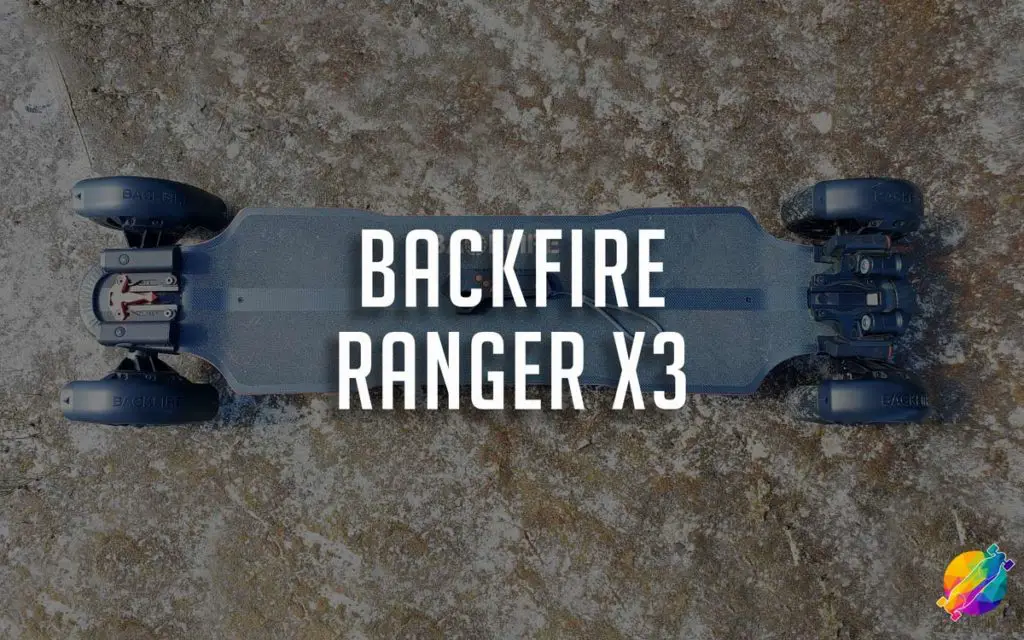
Check out our Backfire Ranger X3 Review

Check out our Review on the WowGo AT2

Check out our Verreal RS Review
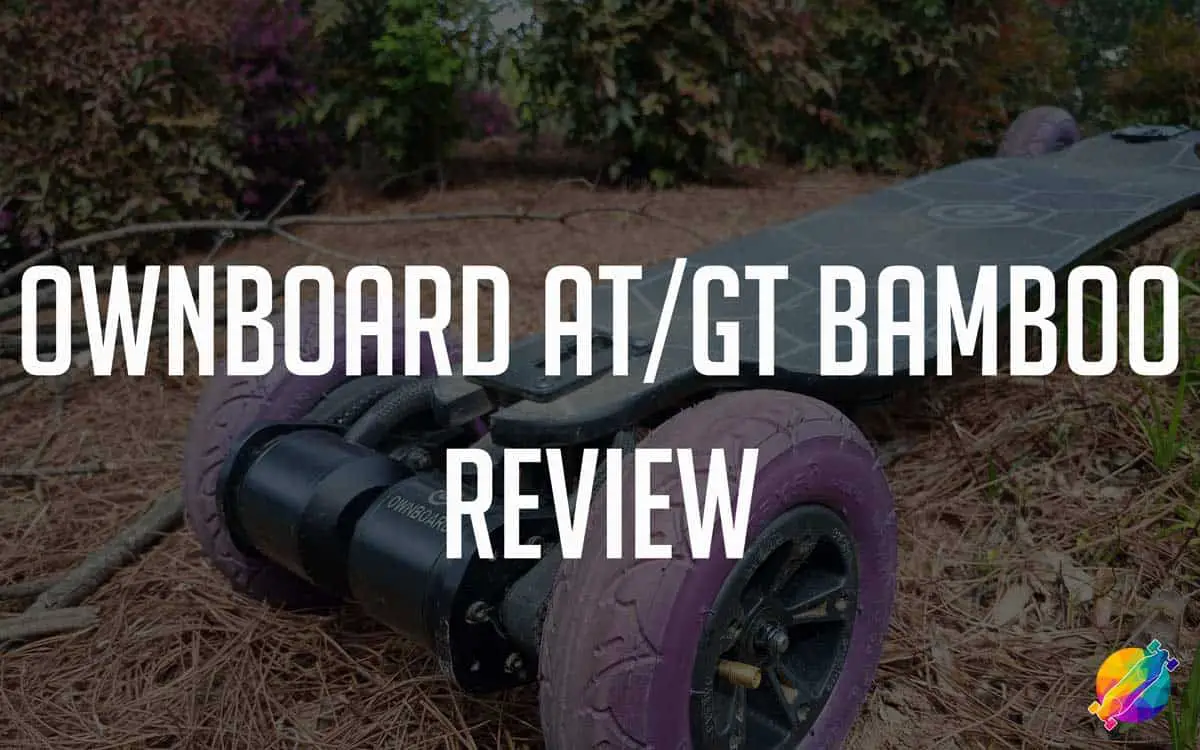
Hi, did you have to change the wheel pulley in order to put on the evolve wheels?
Hey Ivan,
Yes.
Best,
Daniel